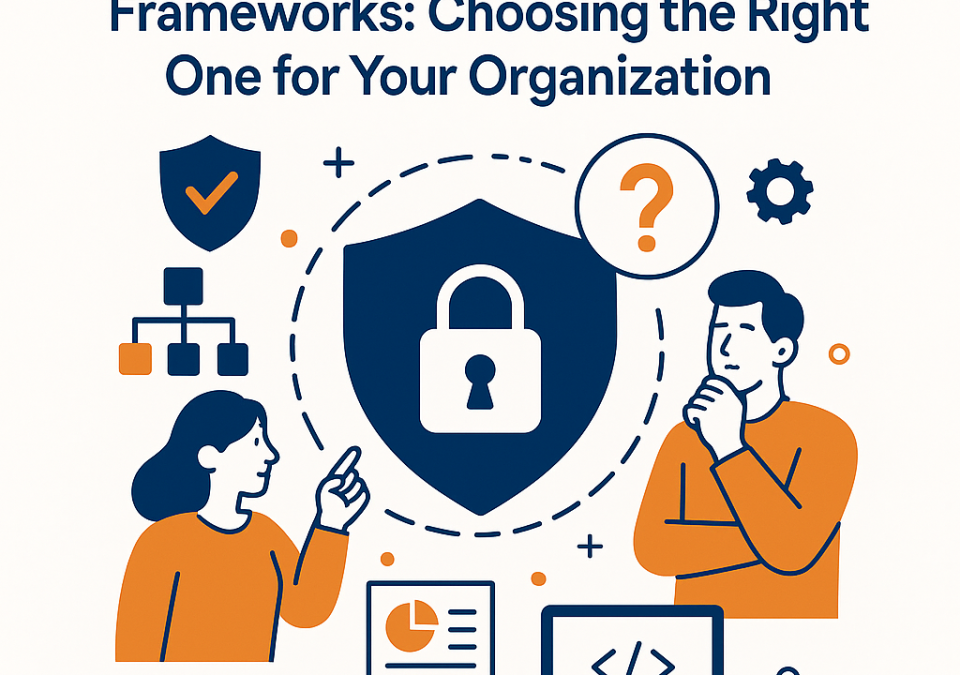
From ISO to NIST: Understanding the Key Security Compliance Standards
June 2, 2025
The Cost of Non-Compliance: How Ignoring Security Standards Can Hurt Your Business
June 2, 2025
In today’s digital landscape, cybersecurity threats are more prevalent than ever. Organizations are faced with a myriad of risks that can compromise sensitive information, disrupt operations, and damage reputation. Therefore, adopting a robust cybersecurity risk assessment framework is essential for identifying vulnerabilities and protecting assets. But with numerous frameworks available, how can organizations select the right one?
Understanding Cybersecurity Risk Assessment Frameworks
A cybersecurity risk assessment framework provides a structured approach to identifying, evaluating, and mitigating risks. These frameworks offer guidelines, practices, and methodologies that can help organizations understand their security posture and make informed decisions. Some popular frameworks include:
-
NIST Cybersecurity Framework (NIST CSF)
Developed by the National Institute of Standards and Technology, this voluntary framework focuses on identifying, protecting, detecting, responding to, and recovering from cybersecurity incidents. It’s widely accepted and provides a flexible structure that can be tailored to organizational needs. -
ISO/IEC 27001
An international standard for information security management systems (ISMS), ISO 27001 emphasizes a risk-based approach to securing sensitive information. It offers a comprehensive, certifiable framework that focuses on continuous improvement. -
CIS Critical Security Controls
The Center for Internet Security developed this set of best practices to protect organizations from cyber threats. It comprises 20 security controls that prioritize actions based on risk, making it suitable for organizations looking for targeted solutions. -
COBIT (Control Objectives for Information and Related Technologies)
Focused on IT governance and management, COBIT aligns IT with business objectives. It integrates risk management and control practices that can be vital for organizations seeking an overarching governance strategy. - FAIR (Factor Analysis of Information Risk)
This model quantifies risk in financial terms, enabling organizations to prioritize risks based on their potential impact. FAIR is particularly beneficial for organizations that need to communicate risk in a business context.
Factors to Consider When Choosing a Framework
Selecting the right cybersecurity risk assessment framework depends on several factors:
1. Organizational Size and Complexity
Larger organizations with complex operations may benefit from comprehensive frameworks like NIST or ISO/IEC 27001, which cover multiple aspects of cybersecurity management. Smaller organizations might prefer simpler, less resource-intensive options like the CIS Controls.
2. Regulatory Requirements
Certain industries are subject to strict regulations regarding data protection. For instance, healthcare organizations must comply with HIPAA, while companies handling financial data must adhere to PCI DSS. Understanding regulatory requirements can guide the choice of the appropriate framework.
3. Specific Threat Landscape
Evaluate the specific threats that may target your organization. If your business is heavily reliant on cloud computing, a framework that emphasizes cloud-specific risks, such as the Cloud Security Alliance’s Cloud Controls Matrix, may be more appropriate.
4. Resources Available
Consider the expertise and resources at your disposal. Some frameworks require specialized knowledge to implement effectively. Ensure your team has the capabilities to understand and apply the chosen framework or opt for one that offers more straightforward guidance.
5. Integration with Existing Processes
Assess how well the framework integrates with your existing processes and systems. A framework that complements your current risk management practices can streamline implementation and enhance overall security maturity.
Steps to Implement a Cybersecurity Risk Assessment Framework
Once you’ve selected a suitable framework, the next steps include:
-
Conduct a Knowledge Gap Analysis
Evaluate your existing cybersecurity posture against the selected framework to identify areas needing improvement. -
Establish Governance
Assign roles and responsibilities to ensure accountability for implementing the framework across the organization. -
Develop a Risk Assessment Methodology
Define how risks will be identified, analyzed, and prioritized based on the chosen framework. -
Execute Assessments
Regularly conduct risk assessments to identify vulnerabilities and potential threats. -
Mitigate Risks
Develop and implement risk mitigation strategies, including policies, procedures, and technical safeguards. - Continuous Monitoring
Establish processes for continuous monitoring and review of the risk environment to adapt to newly emerging threats.
Conclusion
Choosing the right cybersecurity risk assessment framework is crucial for effectively managing risks and enhancing your organization’s security posture. By considering factors such as size, regulatory obligations, and resource availability, organizations can identify the framework best suited to their needs. Ultimately, a strategic approach to cybersecurity will not only protect sensitive data but also instill confidence in stakeholders and customers alike. In an era where cyber threats are ever-evolving, investing in a solid risk assessment framework is worth every effort.







